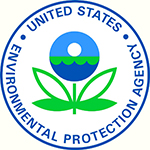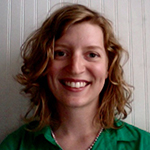 Rebecca Gernes, a dual-degree candidate in social work and public health at the Brown School at Washington University in St. Louis, has been chosen as the only student among eight academic partners selected by the U.S. Environmental Protection Agency (EPA) for the Toxic Release Inventories (TRI) Challenge for the 2013-14 school year.
Rebecca Gernes, a dual-degree candidate in social work and public health at the Brown School at Washington University in St. Louis, has been chosen as the only student among eight academic partners selected by the U.S. Environmental Protection Agency (EPA) for the Toxic Release Inventories (TRI) Challenge for the 2013-14 school year.
Gernes, a native of Des Moines, Iowa, is studying the relationship between air pollution and asthma in East St. Louis, Ill., and its surrounding areas – including the city of St. Louis.
“Rebecca’s work is an outstanding exemplar of both the caliber of students here at the Brown School and the transdisciplinary nature of the training students receive here,” said Darrell L. Hudson, PhD, assistant professor at the Brown School and Gernes’ adviser on the project. “It is also significant that Rebecca’s work hearkens back to the historical origins of both public health and social work with her use of mapping — not just mapping disease but pinpointing socioeconomic factors that have an impact.”

Gernes worked overtime last spring to be considered for the TRI Challenge. Under the guidance of Hudson, she began to work with the Metro East Community Air Project (MECAP), an organization devoted to addressing air pollution on the east side.
Gernes’ intent was to use experience gained at the Brown School in computer mapping, called ArcGIS, to learn about air pollution and asthma and how it impacts residents in East St. Louis and its neighboring communities.
“The EPA Challenge came up right in the middle of finals week,” Gernes says. “I ended up writing the proposal a semester ahead of time just to get it in for the TRI deadline.”
Gernes’ overtime paid off. She was notified this summer of her EPA selection, and is spending this semester analyzing raw data. In the spring semester, she will work on creating maps and charts that put her findings into easily digestible information sources.
As a challenge recipient, Gernes will be partnered with an EPA point person who will be available to answer any questions related to the data or her approach and offer guidance. In addition, the project receives national recognition with potential opportunities to speak at conferences and events.
“We’re very excited for her,” said Amy Funk, project specialist for MECAP. “One of the main purposes of Rebecca’s project is to highlight air pollution as a health issue, looking at the toxic release inventory and potential impact to health.
“Air pollution is not an easy thing or something that resonates with the average person, because it’s very technical. But being able to have a map, for example, that creates overlays related to demographic information, poverty and other variables — as well as air pollution — can be a very powerful tool in educating the community,” Funk said.
“That’s the beauty of ArcGIS. Technical data in a chart has a tendency to cause someone’s eyes to glaze over. But if they’re seeing it in a map, it makes the information so much more relatable and understandable.”
Besides Hudson, Gernes also credits Aaron Hipp, PhD, assistant professor, for giving her the background needed for the project in two Brown School courses, one in environmental health and the other in GIS.
“Both areas are skills a lot of students are interested in,” Gernes said, “even if they don’t have a scientific background. The Brown School is doing a good job in keeping up with environmental health and how to educate the community.”
To learn more about MECAP, visit meairproject.org.
To learn more about the EPA TRI Challenge, visit here.